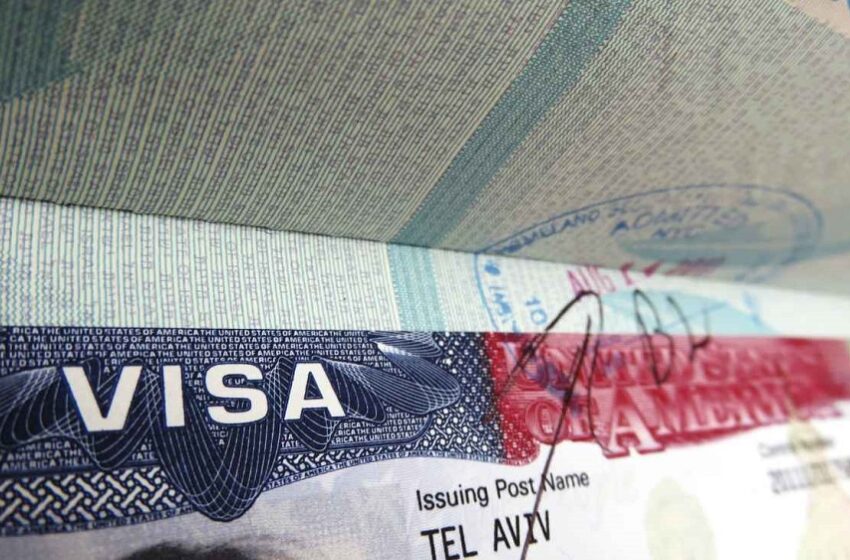Last action rule spells trouble for work visa holders

 It holds that USCIS’ most recently approved action governs a noncitizen’s US status
It holds that USCIS’ most recently approved action governs a noncitizen’s US status
Late last year, an Indian family (name withheld on request) who live and work in the US on an H visa faced an unusual immigration situation.
While traveling back to the US from India at the immigration, the US Customs and Border Protection Officer issued them an I-94 (the DHS arrival-departure record issued to visa holders while being admitted to the US) that did not have a date corresponding with their visas which were valid for another two years.
After their stamping they realized that the primary H-1B visa holder’s I-94 was for only nine months corresponding to the date his passport was valid for. Even though, his visa was approved and stamped for a two-year period.
Read: Biometrics suspension extended for some I-539 applicants (April 20, 2023)
Since the primary visa holder got an I-94 with 9-month validity, the H-4 holder spouse also got hers for 9 months even though her passport was not expiring for another few years.
Puzzled with these new dates and how to navigate it, they approached an attorney who advised them to be mindful of their I-94 dates so as to not accumulate unlawful presence in the US.
Ironically, many work visa holders are often left bewildered with this variation of dates on their visas and I-94 issued after their travel outside of the US, leading them to either acquire unlawful presence unknowingly or scurrying around to get their visas re-stamped before the I-94 expiring.
This ruling known as the Last Action Rule, has been causing enough confusion and problems for the work visa community as many do not understand its implications.
As Washington DC based immigration attorney, Prashant Dubey of Dubey Law Firm explains, “The informal ‘last action rule’ holds that USCIS’ most recently approved action in a matter, governs a noncitizen’s US status.”
How this rule can affect work visa holders not just when they travel outside of the US, but also in other scenarios, Dubey says, “I believe the easiest way to see it in effect is through its application.”
Read: Selected in H-1B registration lottery? What next (April 19, 2023)
“Take this scenario: Suppose you are on an H-4 visa and before it expires, you file for an extension. That extension remains pending. Then you secure an H-1B sponsorship with an employer who files your H-1B application.
“Now you have two applications pending. Let’s say the H-1B is approved first in premium processing, and the H4 is approved many months later.
“In this scenario, the H-1B status is lost and the individual will go back to H4 status. This is because the ‘last action’ taken would have been the H4 extension approval, not the H-1B approval.
“If we further unpack the consequences of the above scenario, then it can significantly impact an individual financially,” Dubey says. “If the H4 is the ‘last action’ taken by USCIS, then a person will have to stop working immediately with their H-1B sponsoring employer.”
California based immigration consultant Netra Chavan confirms that many work visa holders seek help or consultation as they are in some way or the other impacted by the ‘last action rule.’
“The rule is dangerous for many legal immigrants and non-immigrants who travel internationally and return when their passport is nearing expiry,” she says.
Read: H-1B filing season renews debate over multiple filings (April 1, 2023)
“Even when they have a valid three year visa stamped on the passport or valid I797A approved by USCIS, still CBP officers at the airport/POE will issue I-94 which is valid only till their passport expiry date.”
“Eventually after passport renewal if that minor or adult traveler misses the date and does not inform the CBP office, they are considered out-of-status from the time of I-94 expiration dates.
“It’s dangerous as that traveler will never learn about this situation till the next extension of visa and at times unknowingly they accrue unlawful presence,” Chavan says.
“Unfortunately, many times these applicants have to leave the country for visa stamping and later visa officers use their discretion and judgment in making decision, based with facts presented on the individual’s circumstance gathered during the interview and information from the DS-160.”
Immigration experts feel that these issues should have an easy solution and could be resolved online if both CBP and USCIS can correspond together.
Chavan says, “We are in a tech-savvy world. These issues need to be solved online and CBP & USCIS can join hands to update I-94 once an applicant uploads all the valid extended documents.”
While many say that this unnecessary hassle is created due to the broken immigration system, attorneys also suggest that steps can be taken by individuals to avert these situations.
Read: Senate bill to reform H-1B, L-1 visa programs (March 29, 2023)
“In order to prevent these types of situations, it is important for nonimmigrants to withdraw any pending applications with USCIS that may harm them due to the ‘last action’ rule,” says, Dubey,
“As from the USCIS perspective,” he says, “there is a simple method that they can implement: sending an email or paper notice to applicants and their Attorneys inquiring about which status they would like to keep before approving multiple pending applications. Putting a response deadline on the notice will ensure applicants respond to the notice.”
